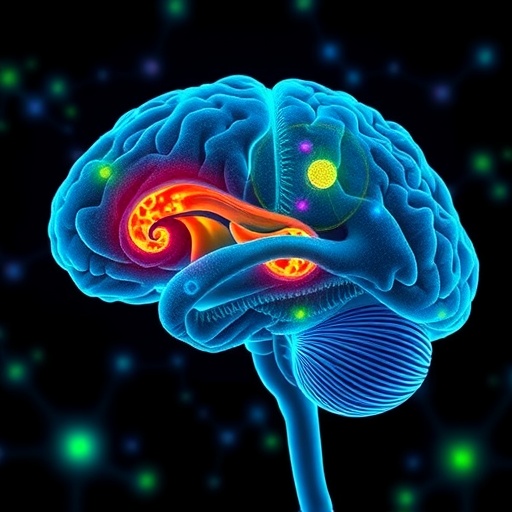In a groundbreaking advancement that promises to redefine therapeutic strategies for ischemic stroke, a team of neuroscientists led by He, X., Chen, J., and Zhong, Y. have demonstrated the remarkable ability of forebrain neural progenitors to integrate seamlessly into damaged brain circuits and restore lost neural functions. Published in the highly prestigious journal Nature Communications in 2025, this study unveils cutting-edge insights into the cellular and molecular mechanisms by which transplanted neural progenitors facilitate brain repair, offering renewed hope for millions of stroke survivors worldwide.
Ischemic stroke, characterized by the sudden interruption of blood flow to the brain, results in rapid neuronal death and a cascade of neurological impairments. Current clinical interventions primarily focus on restoring perfusion or mitigating damage immediately after stroke onset, yet no effective therapeutic options exist to regenerate or replace the damaged neural networks. Against this backdrop, the exploration of stem cell-based treatments has gained tremendous momentum, particularly leveraging neural progenitors known for their capacity to differentiate and replenish neuronal populations.
What sets this study apart is its rigorous demonstration that forebrain neural progenitors, when introduced into the post-ischemic brain, do not merely survive but actively integrate into the existing neural circuitry. This integration surpasses traditional benchmarks of cell survival and differentiation, extending into functional synaptic connectivity and participation in neural signaling essential for cognitive and motor functions.
Delving into the technical details, the researchers employed advanced transplantation techniques paired with sophisticated in vivo imaging modalities and electrophysiological recordings. These methods allowed them to trace the fate of the grafted neural progenitors, monitor their migration patterns, and assess their electrophysiological properties within ambient brain tissue environments. Notably, progenitors derived from the forebrain region exhibited intrinsic compatibility with host brain architecture, presumably attributable to region-specific gene expression profiles that guide circuit formation.
The methodology included the induction of ischemic stroke in rodent models through middle cerebral artery occlusion, a well-established paradigm simulating human stroke pathology. Subsequently, purified populations of forebrain neural progenitors were transplanted into the peri-infarct zones—regions surrounding the core of ischemic injury—within a defined post-stroke window. Longitudinal analyses revealed that these cells proliferated, extended neurites, and formed synaptic contacts with native neurons in the host tissue.
Crucially, electrophysiological assays demonstrated that the integrated progenitors were functionally active, generating action potentials and responding to synaptic inputs in a manner indistinguishable from endogenous neurons. This functional electrical integration was confirmed using patch-clamp techniques in acute brain slices, evidencing that transplants contributed to restoring disrupted neural network dynamics.
Behavioral assessments further substantiated the therapeutic impact, with animals receiving the progenitor transplants showing significant improvement in motor coordination, sensory processing, and cognitive performance compared to stroke controls receiving sham treatments. These improvements persisted over extended follow-up periods, underscoring the durability of the neural repairs achieved.
At the molecular level, transcriptomic and proteomic analyses illuminated upregulated pathways involved in synaptogenesis, axonal guidance, and neurotrophic support within the grafted cells. Key signaling molecules such as brain-derived neurotrophic factor (BDNF), synapsins, and adhesion molecules were differentially expressed, suggesting a tailored response by the progenitors that facilitates their integration and survival.
The study also addressed potential concerns regarding tumorigenicity and immune rejection, often associated with cell-based therapies. Rigorous safety assessments showed an absence of uncontrolled cell proliferation, and the use of immunosuppressive protocols enabled engraftment without eliciting detrimental inflammatory responses. These findings strengthen the translational potential of forebrain neural progenitors for clinical application.
Importantly, this work elucidates the temporal dynamics of neural integration, revealing that the critical window for progenitor transplantation extends several days post-stroke. This flexibility widens the clinical applicability, as patients often receive treatment outside the hyperacute phase. The progenitors’ remarkable plasticity and ability to adapt to the hostile post-ischemic microenvironment represent a significant stride forward.
From a broader scientific perspective, the study opens new avenues for understanding brain repair mechanisms. By establishing how transplanted progenitors participate in circuit remodeling, the research offers a blueprint for developing combinatorial therapies that might include biomaterial scaffolds, growth factors, or genetic modifications to further enhance integration and functional recovery.
Moreover, the implications of this research extend beyond stroke, with potential applications for other neurological disorders marked by cell loss and circuit disruption, such as traumatic brain injury, neurodegenerative diseases, and certain forms of epilepsy. The principle of regionally specified progenitors tailored to the host brain environment could revolutionize regenerative neurology.
Critically, the authors emphasize the importance of matching donor cell identity with host regional characteristics to maximize integration efficacy. Future studies will likely explore the generation of progenitors from patient-derived induced pluripotent stem cells (iPSCs), enabling personalized therapy while mitigating immune incompatibility.
In conclusion, the study by He, X., Chen, J., Zhong, Y., and colleagues represents a milestone in regenerative neuroscience. Their elegant demonstration of forebrain neural progenitors integrating and functionally repairing ischemic brain circuits heralds a new chapter in stroke therapy, bridging fundamental research with clinical potential. As the field advances, this innovative approach may finally deliver on the decades-long quest to restore lost brain functions after stroke, profoundly changing patient outcomes.
Subject of Research: Neural progenitor transplantation and integration for functional recovery after ischemic stroke.
Article Title: Forebrain neural progenitors effectively integrate into host brain circuits and improve neural function after ischemic stroke.
Article References:
He, X., Chen, J., Zhong, Y. et al. Forebrain neural progenitors effectively integrate into host brain circuits and improve neural function after ischemic stroke. Nat Commun 16, 5132 (2025). https://doi.org/10.1038/s41467-025-60187-5
Image Credits: AI Generated




